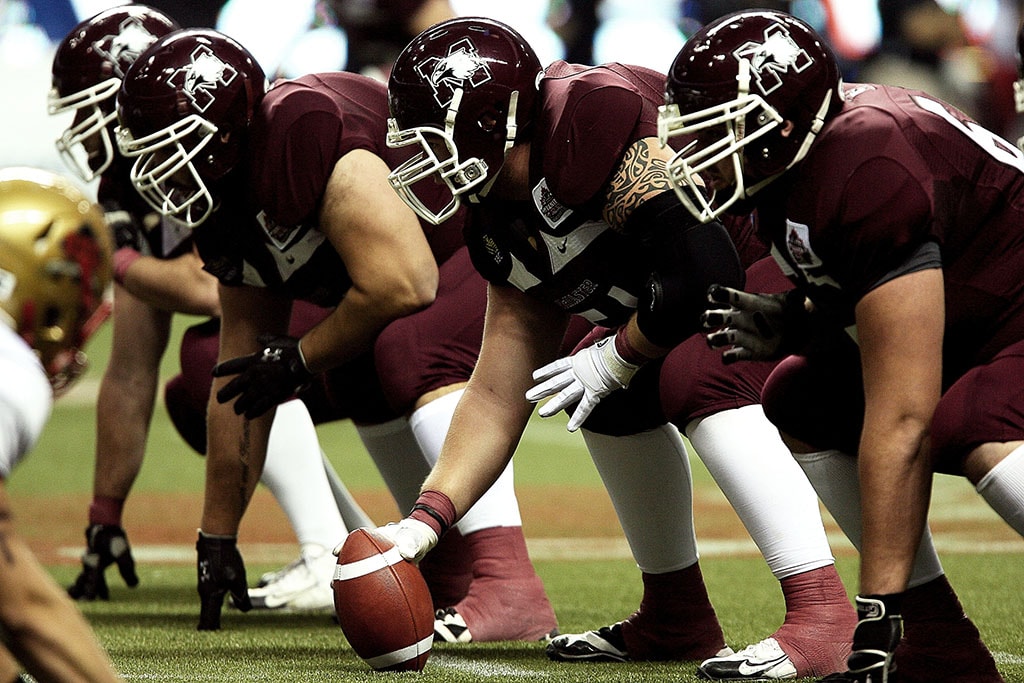Sometimes you can repeat a phrase or articulate a theory or belief so often that it begins to become simply background noise or, if repeated enough, irrelevant. I am referring to my ongoing use of the metaphor, “another brick in the wall” as it relates to the future of tackle football in America. It seems as if no sooner do I write an essay identifying a trend or incident that, coupled with the larger trends of declining television viewership, declining numbers of participants at the youth league level, increased public and media scrutiny, contributes to the steady, drip-by-drip and brick-by-brick evolution of our society’s relationship with the sport of tackle football.
These past few weeks offered another couple of bricks to add to the building of that wall. We’re accumulating so many bricks that we’ll soon have enough left over to “build that wall” on our Southern border. In fact, I’m sure Mexico will appreciate those excess bricks as it will reduce their building costs when they pay for it.
The addition of these bricks in the wall relate to two recent events that, once again, demonstrate how the culture surrounding the sport of football continues to reveal itself to be increasingly out of touch with rapidly changing American values, attitudes and norms. It is significant that the culture surrounding the game and its coaches is receiving such increased scrutiny as it is safe to say that for far too long, the football community has gotten a relatively free pass relating to the negative impact and influences of the culture surrounding the game.
Media and academic critics have long questioned certain aspects of that culture as it relates to the brutal nature of the game, its’ anti-intellectualism, the corrupting influence of the win at any cost culture and the sense of entitlement that athletes and star coaches often exhibit. But for the most part, the scandals that have lead to increased scrutiny in these areas and the attention paid to them, generally fizzles out over time and we find ourselves resorting to our traditional treatment of coaches and programs as being too important and too big to seriously challenge.
But like a wall that becomes stronger as more bricks are added, increased scrutiny begets increased scrutiny. As the light of sunshine begins to spread wider and penetrate deeper into the culture of football, additional areas of concern begin to reveal themselves.
The first is the case of Ohio State University where the university suspended its football coach, Urban Meyer, for three games – a mere slap on the wrist – after he apparently lied about and deleted emails relating to his mishandling of domestic violence allegations against one of his assistant coaches. There was a day when there would be little initial scrutiny, much less dogged follow-up and investigation, into issues at the intersection of the culture of football and domestic violence. For far too long, in such cases, it has been the woman who has been shamed or pressured to quietly bear the scars and pain in the name of “protecting the coach and program”. Often such accusations and claims never saw the light of day. But in the #MeToo and social media age, those days are gone. And as increased light is being shed on the “boys will be boys” culture of football, what the public is beginning to see more plainly, is a culture that is increasingly out of line with America’s rapidly changing social norms and mores regarding treatment of women and domestic abuse.
The second incident is the tragic death of the University of Maryland freshman football player, Jordan McNair, a freshman lineman who died of heat stroke after running a set of 110-yard wind sprints. The first question is why lineman, who hardly ever run more than 20 yards on a play during games are running 110 yard sprints. Beyond that, apparently Maryland either did not have in place or did not follow commonly accepted treatment procedures for preventing and treating heat stroke.
But in the “increased scrutiny begets increased scrutiny” category, in the investigative process of McNair’s death, according to an ESPN report, several current football players and people close to the program described a toxic coaching culture under head coach D.J. Durkin based on fear and intimidation. Belittlement, humiliation, extreme verbal abuse and embarrassment of players was common. According to ESPN, one player was belittled verbally after passing out during a drill. Coaches also used food punitively as it was reported that a player said he was forced to overeat to the point of vomiting.
As a former all-American and professional basketball player and son of a high school football coach, I have both witnessed and been on the receiving end of intense, profanity laced tirades. Highly competitive sports are intense and emotionally charged. As a player, you understand that a certain amount of that comes with the territory. But there are limits. Coaches don’t get carte blanche to humiliate, belittle and berate young people. No one does. And in particular, anyone associated with an educational institution. Athletes deserve the same opportunity as all students to learn and experience college life in an environment that is safe and one that treats them with dignity and respect.
There are two salient issues as it relates to this particular situation and the culture of football in general. The sad reality is that far too many coaches and athletic administrators don’t think of football “student-athletes” as students at all, but rather as hired guns and dumb jocks. As a result, they are denied the same rights as other college students, that being the right to have a quality educational experience and earn a meaningful degree. In short, it is clear to everyone, and in particular to the players themselves, that they are on campus, first and foremost, to play ball.
The second relates to the most fundamental justification used by the athletic establishment for athletic programs and their coaches to a part of the educational institution in the first place. Specifically, that athletic programs supplement the academic mission of the institution and that coaches are in fact “teachers”. If coaches justify their place on campus in that they are educators and teachers, why aren’t they held to the same standards of decorum and behavior as all other faculty members? You can’t have it both ways. You can’t justify your place and role in an academic community by claiming to be an educator while engaging in abusive practices that create an atmosphere of fear and intimidation. An atmosphere where students are verbally abused, belittled, berated and humiliated is hardly a nurturing educational environment.
The fact is, while there may have been a time when it was widely accepted that screaming, berating and intimidating players was simply a part of how coaches “made boys into men”, those days are over. While such behavior and methods might be acceptable for training Marines for war, intercollegiate and interscholastic football is not war. Such behavior has no place within an educational institution.
Granted, these two incidents, in and of themselves, will not bring the American football industrial complex to its knees. But make no mistake, slowly and surely, things are changing as it relates to the role, influence and impact of football in our society. Consider these as another couple of bricks in the wall in America’s reassessment of the role of football in our society.


